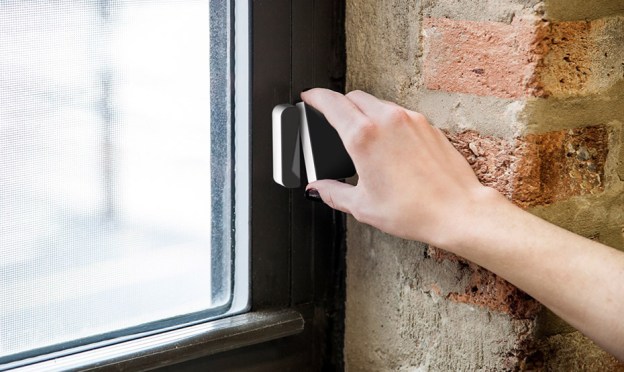
Bypassing Kickstarter and Indiegogo to raise an initial round of funding through the official site, the team developing the Scout home security system are offering Wi-Fi connectivity, simple installation and a low price tag to compete against traditional home security services offered by companies like ADT and Lifeshield. The base station of the Scout system must be plugged directly into a home’s router, but the sensors communicate with the base station wirelessly. Scout users can interact with their home’s security system by connecting to the base station through a computer or a mobile device like a smartphone.

In addition, the base station includes a 3G cellular chip that can send an alert to the user when other communication paths are unavailable, perhaps when the power goes out. The Scout development team has included a battery backup within the base station in case this scenario occurs. The battery should be able to power the base station for a full week when the power is out for an extended period.
The 3G service does require a $10-per-month subscription fee, but this pales in comparison to the monthly fees charged by other home security services. A traditional security service typically charges between $30 to $50 per month for continued monitoring service and forces the consumer to sign a standard three year contract. While the initial cost of installation hardware can be inexpensive with a traditional security service, it can easily end up costing the consumer $1,500 to $2,000 over the life of the contract.

When combined with Zigbee-powered devices, the customized responses could turn on lights within the home or start blasting a song on the home theater system to scare off an intruder.
Targeting an underserved portion of the home security market, the installation of this system is ideal for people renting homes or apartments. The motion sensor, open/close sensor and arm/disarm panel can be installed without the need for wires or any significant damage to walls. It can also be removed easily when it’s time to move to a new place.
Taking a page out of Nest’s playbook, the modern design of the Scout devices are much sleeker when compared to traditional security hardware. Scout is offering the system in black, white and walnut to blend into different decors. Regarding the cost of hardware, users can completely customize how much hardware they need per order. Scout also offers a slider tool on the site to estimate the amount of required hardware for a home or apartment. For instance, someone that wants to cover two doors and six windows could spend $350 for one base station, one arm/disarm door panel, seven open/close sensors, two motion sensors and one yard sign with the Scout logo.
There are no long-term contracts required to utilize the Scout system and setup can be accomplished by the user easily through the software. Assuming an additional $135,000 of funding is raised within the next four weeks, the first batch of Scout security systems is expected to ship during August 2013. It’s possible that the installation of a Scout home security system could help the user qualify for discounts on their homeowners insurance, but that decision is entirely up to each insurance provider.


